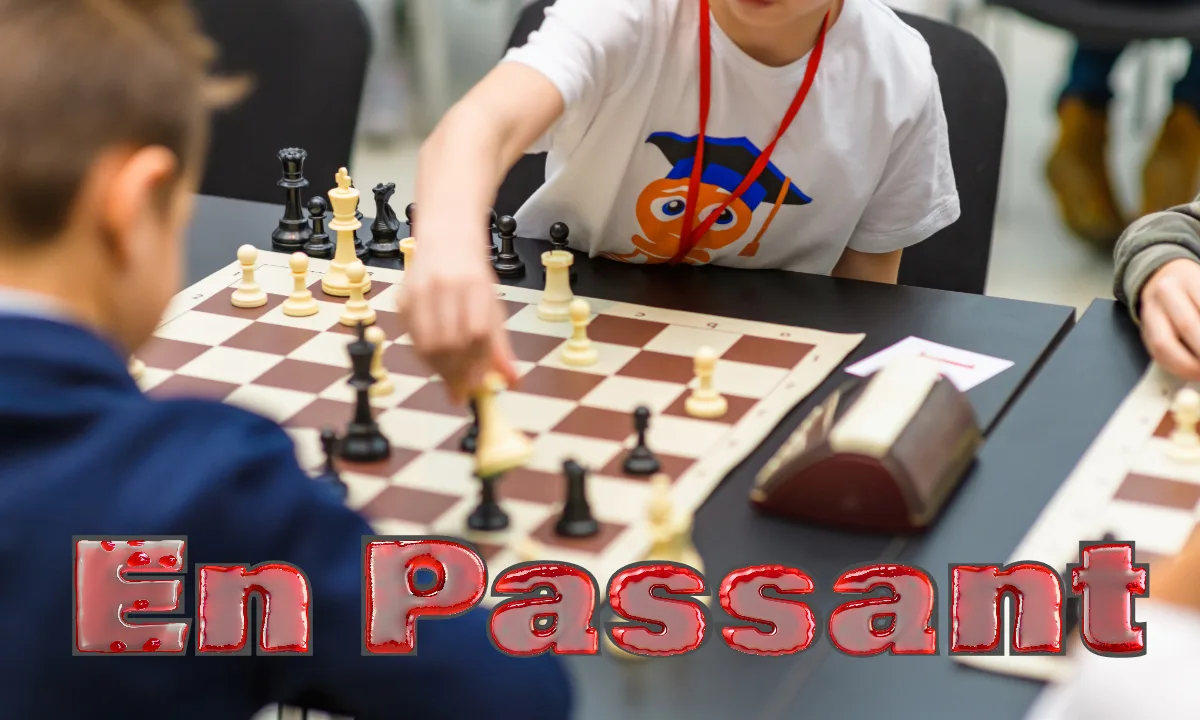Chess is full of peculiar quirks that make the game as beautiful as it is challenging. Among them, en passant is the most delightfully obscure. It’s the kind of rule that sparks heated debates in beginner games and smug smiles in expert ones.
If you’ve ever found yourself asking, “Wait, that’s allowed?” after someone captures your pawn in the strangest way possible, welcome to the world of en passant. Let’s break it down, so you can wield this quirky rule with confidence—and maybe a little flair.
What Is En Passant?
En passant (French for “in passing”) is a special rule that allows a pawn to capture an opposing pawn in a very specific situation. It’s a bit like sneaking in through the side door while everyone’s looking at the front.
Here’s how it works:
- Your opponent moves a pawn two squares forward from its starting position, bypassing a square where your pawn could have captured it if it had moved just one square forward.
- You have one chance—on the very next move—to capture their pawn as if it had only moved one square forward.
- This capture is made diagonally, just like a regular pawn capture.
And voilà! You’ve executed en passant.
Why Does En Passant Exist?
The rule dates back to the 15th century, when pawns gained the ability to move two squares on their first move. Without en passant, pawns could simply bypass enemy pawns trying to control the center, making the game less dynamic. Think of it as a fairness clause—it keeps the battle for control of the board alive and well.
How to Recognize an En Passant Opportunity
Not every pawn duel ends in en passant. The stars must align for this rule to come into play:
- The Pawn Bypass: Your opponent’s pawn must move two squares forward from its starting position, landing directly next to your pawn.
- Timing Is Everything: You can only capture en passant on the very next move. If you hesitate or forget, the opportunity is gone forever.
Why Beginners Hate It
If you’re new to chess, en passant feels like the game just punked you. One minute, your pawn looks perfectly safe, chilling on its shiny new square. The next, your opponent casually sweeps it off the board like it’s nothing.
It’s not uncommon for beginners to cry foul, insisting it’s “against the rules.” Pro tip: It’s not. You just didn’t read the fine print.
Read more: How to Avoid Stalemate in Chess?
How to Use En Passant to Your Advantage
1. Stay Alert
Keep an eye out for enemy pawns zooming past your own. If they land next to your pawn, don’t hesitate—capture en passant and watch your opponent’s jaw drop.
2. Control the Center
En passant shines brightest in the center of the board, where pawns battle for dominance. Use the rule to keep your opponent from sneaking past your defenses.
3. Flex Strategically
Let’s be honest—executing en passant isn’t just practical. It’s stylish. Nothing says “I know my chess” like whipping out this obscure rule at just the right moment.
The Fastest En Passant Checkmate
Someone on Chess.com has found a way to checkmate by the En Passant at move 7. Could be arrange a faster checkmate?
The Misunderstandings
Beginner: “Wait, you can’t do that!”
Experienced player: “Actually, I can. It’s called en passant.”
Beginner: “That’s not fair!”
Chess players across history have felt this confusion. The key is to embrace it. If you’re on the receiving end, consider it a free lesson in the depths of chess strategy.
The r/anarchychess Joke about En Passant
The en passant meme blew up on r/AnarchyChess because it’s the perfect mix of confusion, absurdity, and chess humor. Let me break it down in a fun way:
- The Setup: A poor beginner on r/chessbeginners thought the AI on chess.com was cheating. Why? Their pawn on f4 mysteriously vanished when the AI’s pawn moved from e4 to f3. Total scandal! Except… this is just the chess rule en passant. Classic beginner moment.
- The Punchline: Someone replied with “Google en passant,” and the original poster’s “Holy hell” reaction was pure gold. That’s the magic—realizing this bizarre, ghost-like capture is not only legit but a rule that’s been around for centuries!
- Why It’s Funny: To newbies, en passant feels like chess made up a random rule just to mess with them. Like, “Oh, your pawn’s gone? Surprise! That’s how it works!” It’s confusing, unexpected, and honestly, hilarious.
- The Meme Factor: r/AnarchyChess, which is all about chaotic chess jokes, took this post and ran with it. They made en passant the ultimate “evil move”—a sneaky, mystical rule only chess overlords understand. The beginner’s shock (“AI is cheating!”) and sudden enlightenment (“Holy hell”) made it a perfect meme.
The post got 55k upvotes because everyone who’s learned chess can relate to that “Wait… what just happened?!” moment. It’s like a rite of passage in chess: first, you think en passant is a cheat code, then you learn it, and finally, you laugh about it forever.
Why We Love En Passant
It’s not just a rule—it’s a story. A tiny drama unfolds every time en passant comes into play. It’s a reminder that chess isn’t just about brute force or simple tactics. It’s about history, subtlety, and mastering the art of the unexpected.
So the next time someone tells you chess is boring, ask them if they know about en passant. If they don’t, teach them. If they do, challenge them—and maybe pull off this delightful move just to keep things interesting.
I’m the senior editor of Attacking Chess, a keen chess player, rated above 2200 in chess.com.


2 thoughts on “En Passant: What Is This Chess Rule? Is This Cheating?”
Comments are closed.